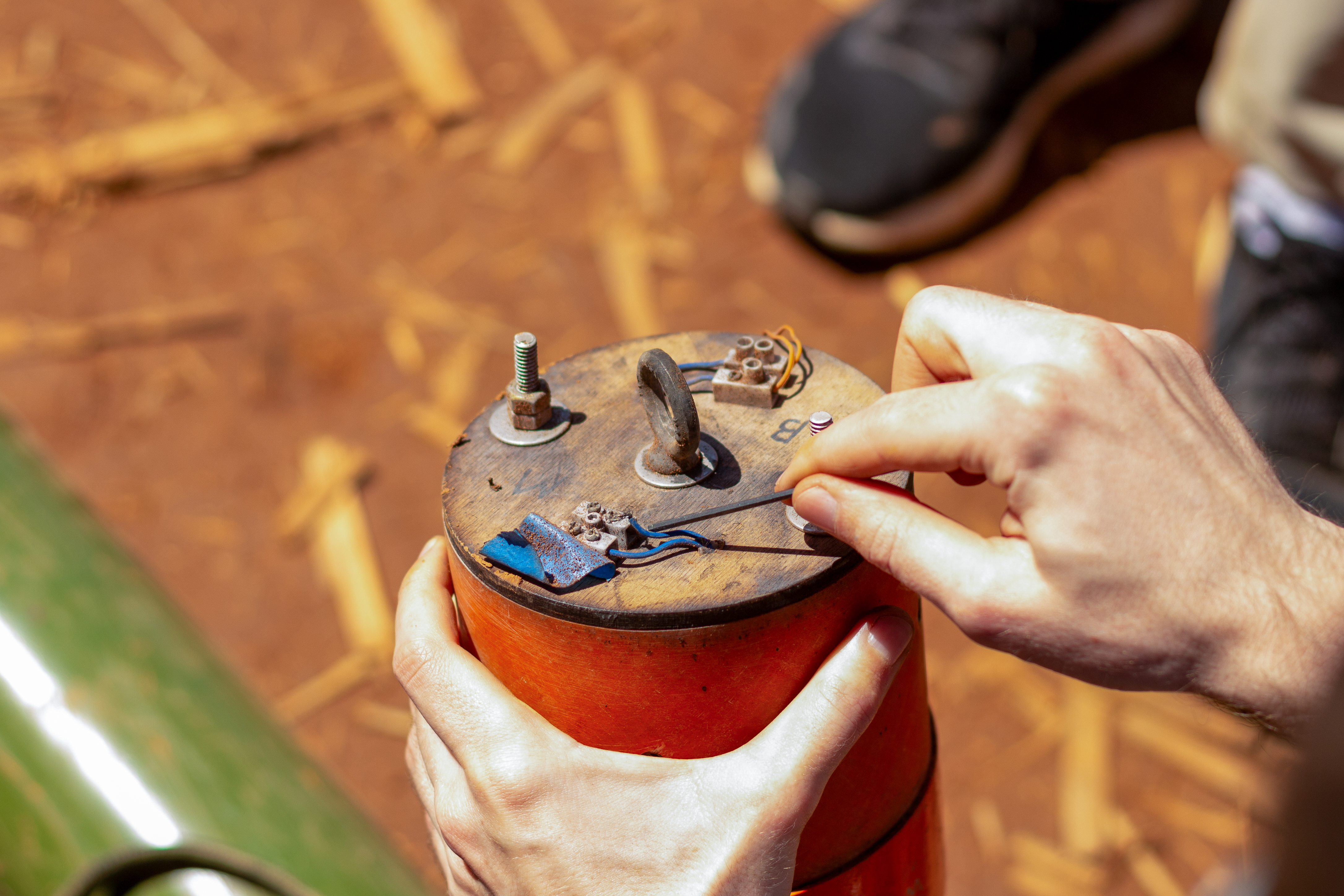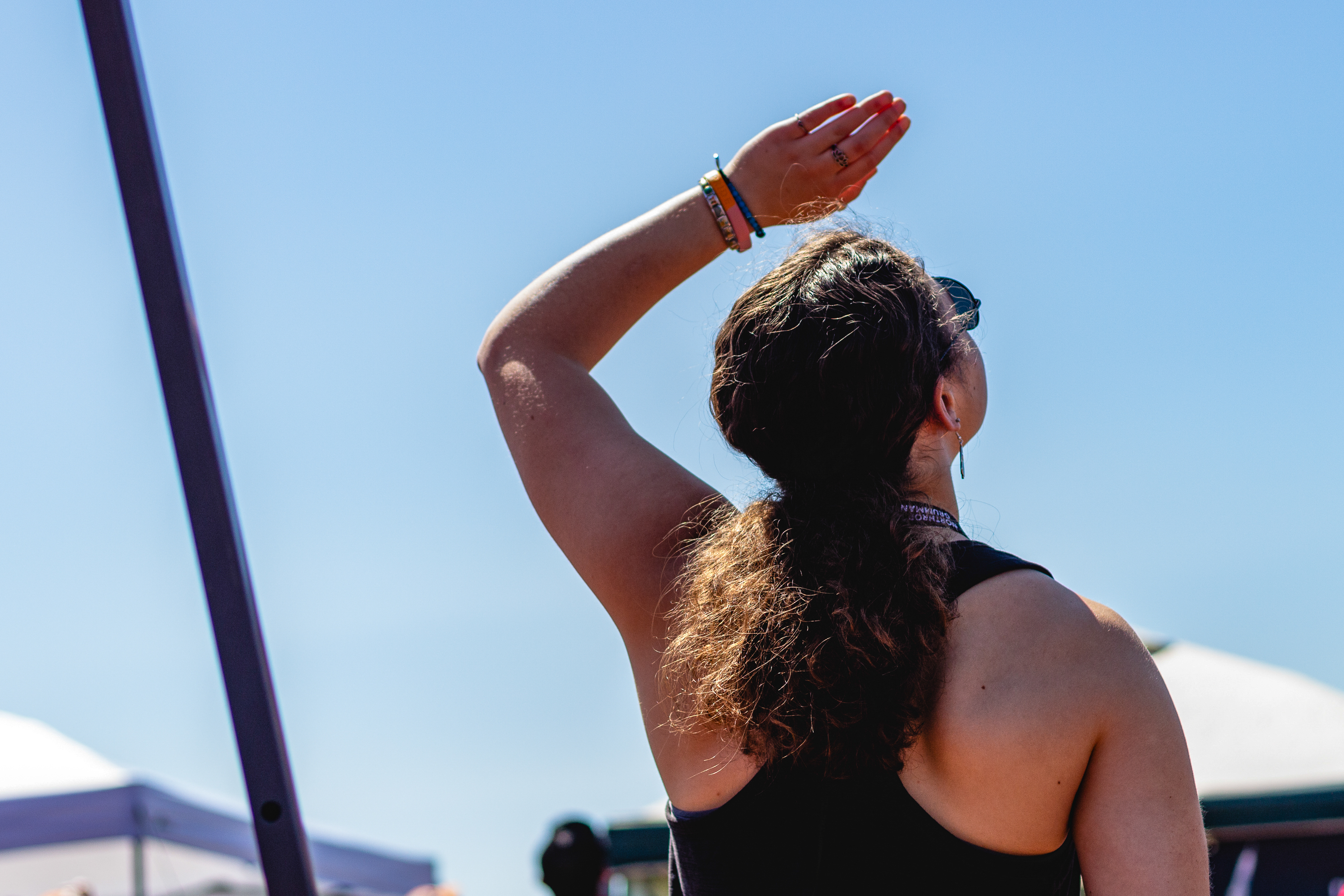Carnegie Mellon Rocket Command Competes in NASA Event
By Kirsten Heuring
Media Inquiries- Interim Director of Communications, MCS
- 412-268-9982
Tanner Aikens and teammates woke before sunrise on April 13 to carry a rocket through a muddy field toward a launch site at Bragg Farms near NASA's Marshall Space Flight Center in Huntsville, Alabama.
The rocket and its 5-pound payload were designed for NASA's Student Launch competition, a research challenge that provides cost-effective research and development to support the Space Launch System (SLS) and Artemis missions.
As the Carnegie Mellon University students waited for their 11 a.m. launch time, they watched other competitors' rockets soar.
"Conditions warmed up throughout the day for a completely clear, sunny and warm launch, with almost no winds," said Tanner Aikens, former president of CMRC and a recent graduate in mechanical engineering.
Carnegie Mellon Rocket Command's countdown began nine months before liftoff. The launch was the culmination of months of work, including planning, prototyping, constructing and testing. The team sent initial reports and designs to NASA in the fall of 2023.
"They wanted to know everything that crossed our minds when we were deciding whether to make the rocket fins 11 inches long or 10 inches long," Aikens said. "You need to justify every design decision you make along the way."
Aikens served as team captain, and work was divided among subteams that focused on mechanical structures, mechanical design, avionics and payload.

A member of CMRC puts the finishing touches on the payload before launch.
This year's challenge required students to design a payload that to be able to deploy mid-air, safely return to the ground without a parachute and be reusable to launch the same day without repairs or modifications. Nicolas Keck, a rising junior in electrical & computer engineering, was head of the team creating the electronic components that would measure rocket data through simulated astronauts. Keck said that the design process was thorough.
"The report process is very similar to how it is in the industry," Keck said. "We were looking at different microcontrollers and making an argument of why we might want to use this microcontroller over another one. A similar design processes is going to be needed for any scientific payload."
By the end of January, the team completed designs for their rocket, the Acceleration & Danger Reducing Explosively-deployed Wing (A&DREW), and payload, the Airbender. The rocket was named for Andrew Carnegie and Andrew Mellon, the founders of what is now Carnegie Mellon. The payload was inspired by a glider from the TV show "Avatar: The Last Airbender" and named for the titular character who uses it.
The Airbender was unpowered and designed to eject from A&DREW. The team used a custom 3D printer created by engineering doctoral student Peter Pak to ensure the glider could be built to the exact specifications they gave NASA.
Patrick Kaczmarek, a rising sophomore in physics, was part of the mechanical structures team that built the rocket's exterior. He said that he joined the team so he could help create something that blends his interest in physics and mechanics.
"I love working with my hands, and I love seeing how things come together," Kaczmarek said. "I was hoping that everything would stay together structurally, but there was always that feeling of, 'I put so much work into this, and I really hope it ends up working out.'"
Eleven members of the team traveled with the final versions of the Airbender and A&DREW to Alabama for Launch Day. Seventy teams from 24 states and Puerto Rico participated this year. Dozens of teams traveled to Alabama, and others conducted final tests flights at launch fields closer to home.
As Carnegie Mellon Rocket Command's window arrived, they launched the rocket. At first, everything was going to plan.
"We set up our rocket on the pad, armed the recovery electronics, and headed a safe distance from the pads," Aikens said. "The rocket A&DREW ascended without a hitch on the Aerotech L1150R solid fuel engine, atop a bright red flame. But, shortly after reaching apogee, something was amiss. As the rocket began to descend, its parachute failed to deploy, with the rocket tumbling rapidly toward the earth."

A member of CMRC shields her eyes from the sun as she watches the rocket launch.
The team was worried whether they would be able to successfully deploy the payload. About 600 ft. above the ground, A&DREW's main parachute finally deployed. NASA gave the team clearance to release their glider.
"While the rocket floated gently to the ground on its main parachute, the Airbender payload drifted toward the ground on its own and landed upright," Aikens said.
It turned out to be one of the only successful payload deployments that day. NASA is assessed flight data, and teams were scored in categories such as safety, vehicle design, social media presence and science, technology, engineering and math (STEM) engagement. CMRC won third place in the Reusable Launch Vehicle Innovative Payload category.
Members of Carnegie Mellon Rocket Command said that the work they did was far more important than any award.
"I joined CMRC because it was a such a big project that everyone worked on together. We have a representative from every college at CMU," Kaczmarek said. "There are so many different interconnected parts, and everyone made an impact."